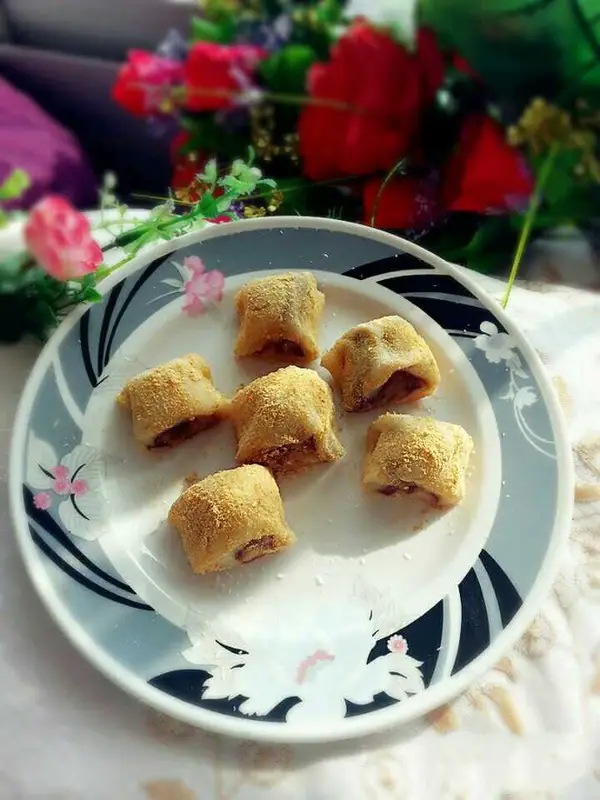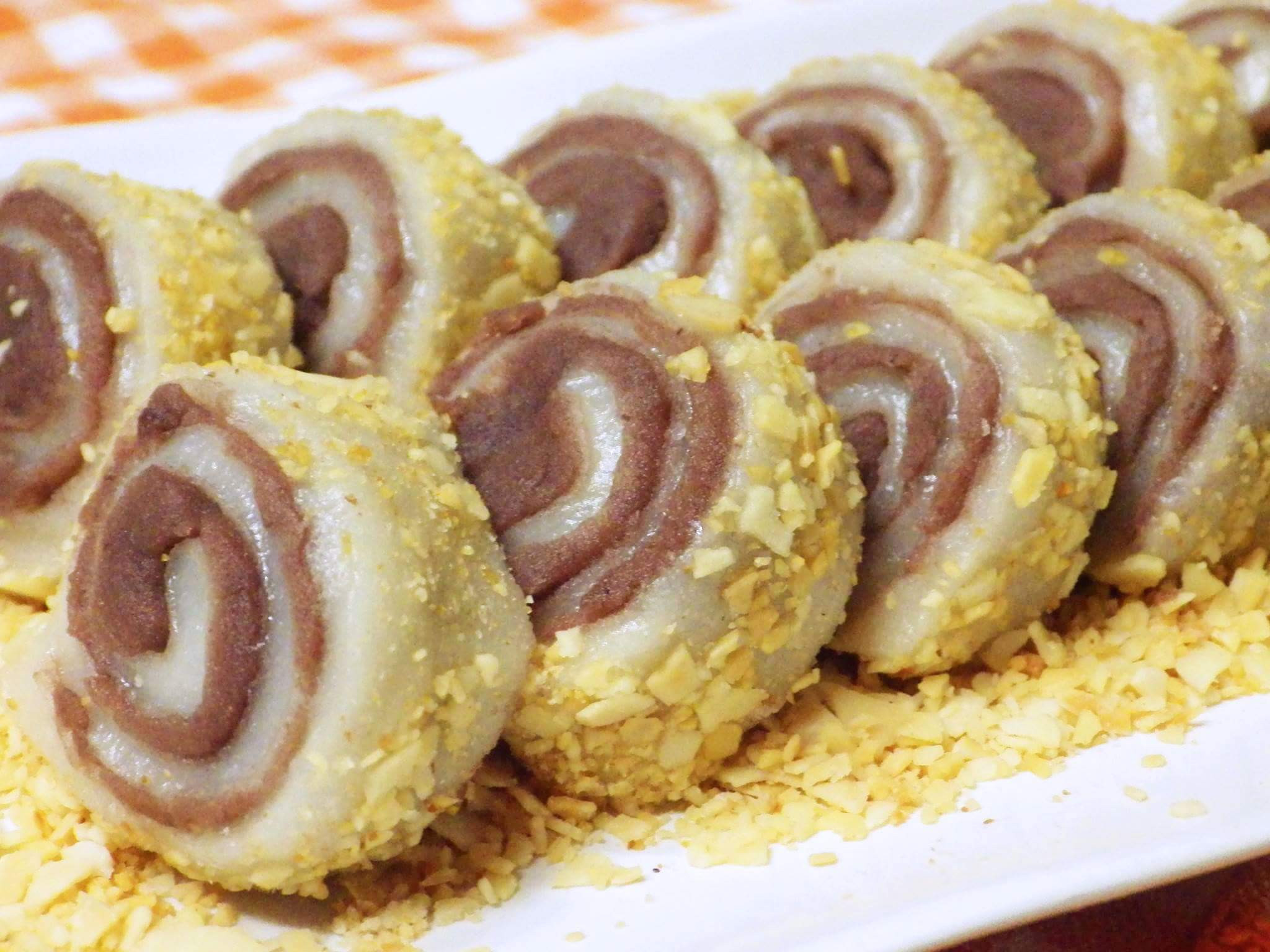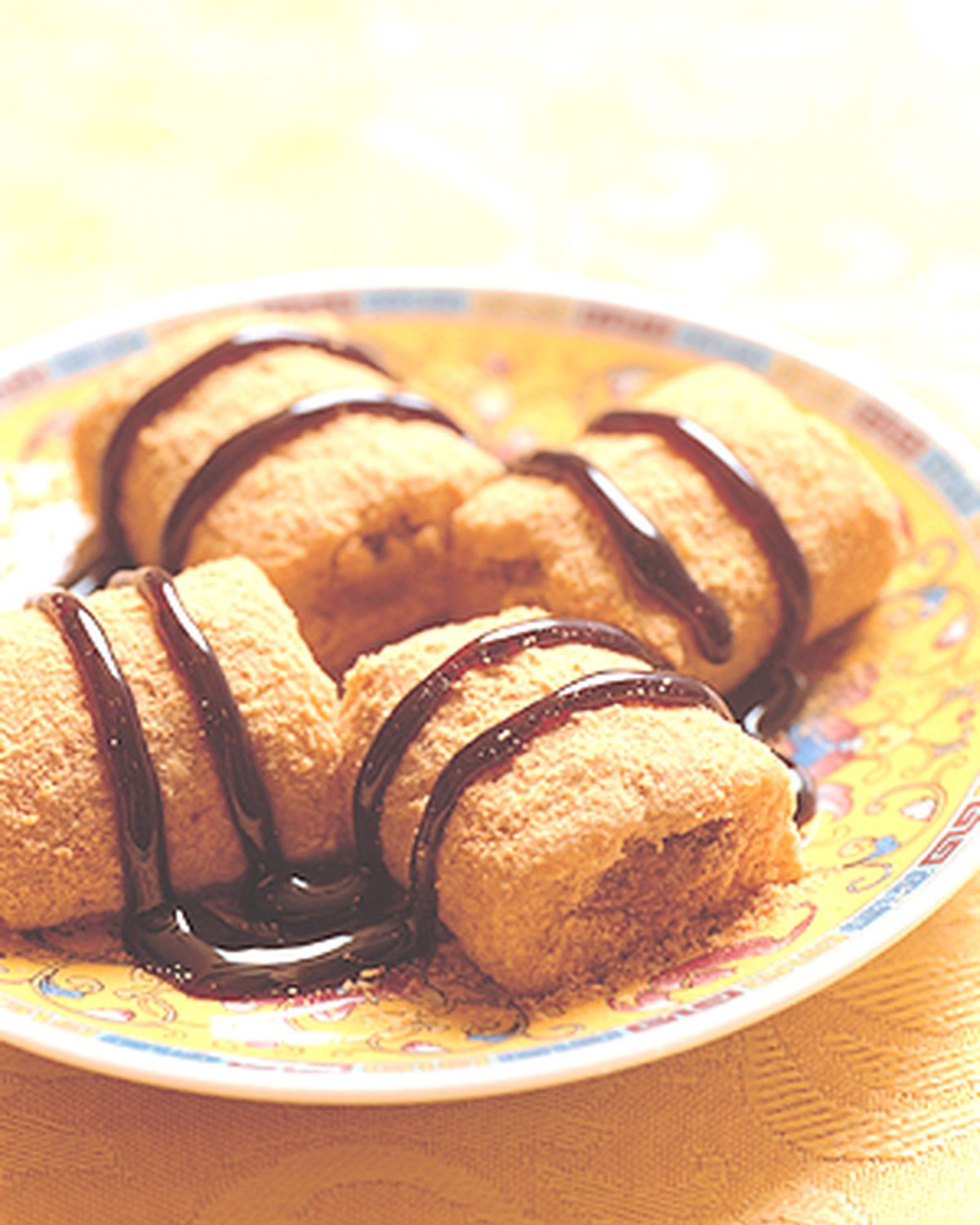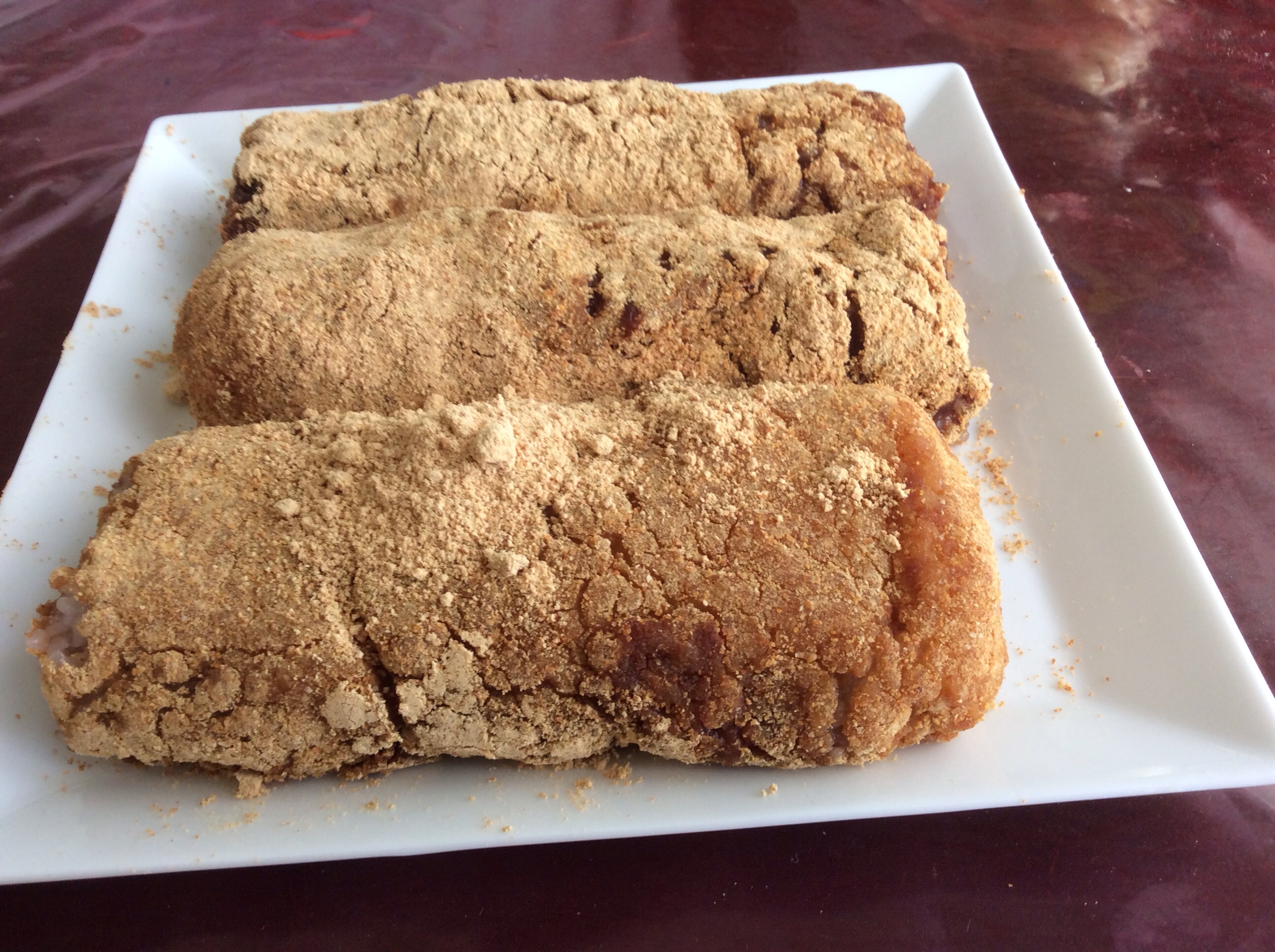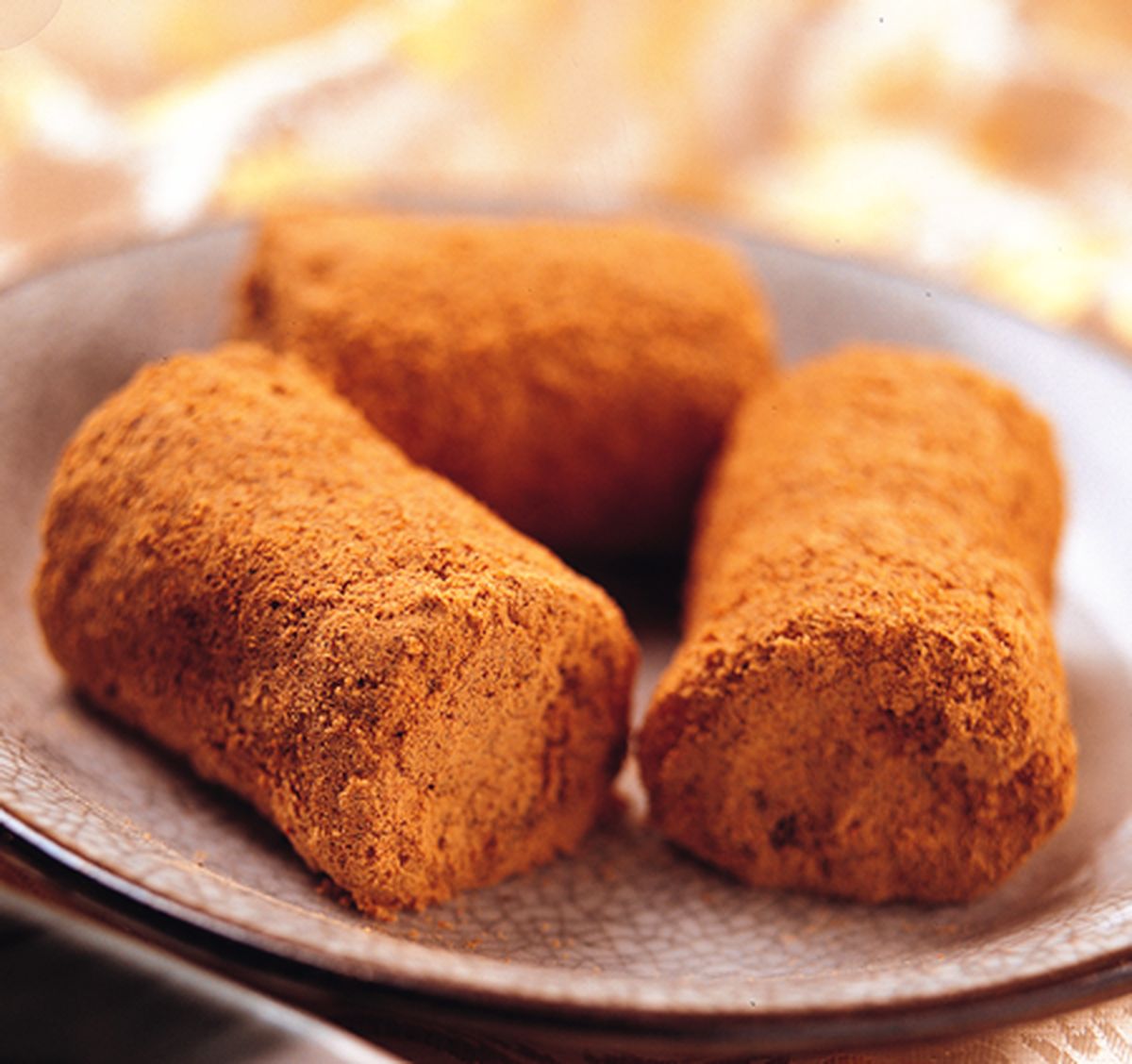Rolling donkey
lv da gun, lu da gun, lu dagun, donkey roll, donkey rolling, 驢打滾, 驴打滚
Lüdagun is a traditional Manchu snack in China. It originated in Manchuria and later became famous in Beijing. The yellow soybean flour sprinkled over the pastry makes it look like a donkey rolling on the loess, which gave rise to its Chinese name, "Lüdagun" (rolling donkey). In the Beijing dialect, erhua causes the name to be pronounced as 驴打滚儿; lǘdǎgǔnr. The origin of the lüdagun is recounted in a folk tale. The story goes that during the Qing Dynasty, Empress Dowager Cixi was tired of imperial food, so she asked the royal chef to cook something new. After some deliberation, the chef decided to make a dish using sticky rice and red bean paste. When the chef finished cooking, a young eunuch, named Lü (pronounced as "lyu", the same pronunciation as donkey in Chinese), carelessly dropped the dish into soya bean flour, but there was no time to re-make the dish. The chef had to serve it to Cixi. However, Cixi praised the taste and wondered what the name of the dish was. The chef had never thought about this question, but he named it as "Lüdagun" to credit eunuch Lu's carelessness. The main ingredients are sticky rice flour, red bean paste, and soybean flour. The exact recipe for making a lüdagun may vary depended on regions and eras, but the general steps for making a modern lüdagun are described as follows. The sticky rice flour is first mixed with warm water to a dough, then after being steamed, the sticky rice paste is shaped into a long strip covered with red bean paste on top, and then it is rolled up into a cylinder-shaped pastry. Finally the pastry is sprinkled with soybean flour, and it is ready to be served.
Source: Wikipedia
